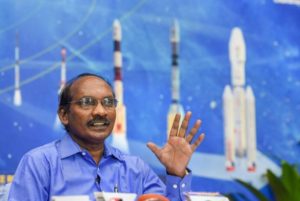 Indian Institute of Technology-Hyderabad (IIT-H) has announced the launch of a full-fledged bachelor’s programme in Artificial Intelligence (AI) technology from the new academic session, a first for the country and only the third globally. Besides IIT, Carnegie Mellon University and Massachusetts Institute of Technology(MIT), both of which are in the US, offer full-fledged B.Tech programmes in AI. The new course will have 20 seats and the eligibility is clearing the JEE-Advanced test. Indian Institute of Technology-Hyderabad (IIT-H) has announced the launch of a full-fledged bachelor’s programme in Artificial Intelligence (AI) technology from the new academic session, a first for the country and only the third globally. Besides IIT, Carnegie Mellon University and Massachusetts Institute of Technology(MIT), both of which are in the US, offer full-fledged B.Tech programmes in AI. The new course will have 20 seats and the eligibility is clearing the JEE-Advanced test. |
| Source: News on AIR |
 India will host the 14th session of the Conference of Parties to the United Nations Convention to Combat Desertification (UNCCD) to address the issue of land degradation and desertification which will have participation from over 100 countries. It is likely to be held in October 2019. The UNCCD, established in 1994, has 197 parties working towards maintaining and restoring land and soil productivity and mitigating the effects of drought. The permanent secretariat of the Convention is located in Bonn, Germany since January 1999. India will host the 14th session of the Conference of Parties to the United Nations Convention to Combat Desertification (UNCCD) to address the issue of land degradation and desertification which will have participation from over 100 countries. It is likely to be held in October 2019. The UNCCD, established in 1994, has 197 parties working towards maintaining and restoring land and soil productivity and mitigating the effects of drought. The permanent secretariat of the Convention is located in Bonn, Germany since January 1999. |
| Source: The Hindu Business Line |
 Japan Aerospace Exploration Agency has launched Tokyo-based startup Star-ALE’s mini-satellite aimed to deliver the world’s first artificial meteor shower. The satellite carries 400 tiny balls, will be enough for 20-30 events, that will glow as they rush down the atmosphere on being released. ALE plans to deliver its first show in Hiroshima in early 2020. Japan Aerospace Exploration Agency has launched Tokyo-based startup Star-ALE’s mini-satellite aimed to deliver the world’s first artificial meteor shower. The satellite carries 400 tiny balls, will be enough for 20-30 events, that will glow as they rush down the atmosphere on being released. ALE plans to deliver its first show in Hiroshima in early 2020. |
| Source: NDTV |
 ISRO Chairman Dr. K Sivan has announced that the organization is well prepared to meet the targets of launching Gaganyaan manned mission to outer space by December 2021. Under Gaganyaan project, India is planning to send three astronauts to outer space for seven days and bring them back. 332 launches are planned this year. Important among them are Chandrayaaan -2 mission to the moon in mid-April. GSAT-20 Satellite for high bandwidth connectivity to be launched in September-October. ISRO Chairman Dr. K Sivan has announced that the organization is well prepared to meet the targets of launching Gaganyaan manned mission to outer space by December 2021. Under Gaganyaan project, India is planning to send three astronauts to outer space for seven days and bring them back. 332 launches are planned this year. Important among them are Chandrayaaan -2 mission to the moon in mid-April. GSAT-20 Satellite for high bandwidth connectivity to be launched in September-October. |
| Source- DD News |
 Indian Space Research Organisation (ISRO) Chairman Dr. K Sivan stated that the Union Government has allocated 10,900 crore rupees for the development of 40 satellite launch vehicles in the next 4 years. Dr. Sivan also stated that Chandrayan Mission will be launched within three months. It will land in one part of the Moon which is still unexplored. He also said that the human spaceflight Gaganyaan is planned to be launched by 2022, the 75th anniversary of Independence. Indian Space Research Organisation (ISRO) Chairman Dr. K Sivan stated that the Union Government has allocated 10,900 crore rupees for the development of 40 satellite launch vehicles in the next 4 years. Dr. Sivan also stated that Chandrayan Mission will be launched within three months. It will land in one part of the Moon which is still unexplored. He also said that the human spaceflight Gaganyaan is planned to be launched by 2022, the 75th anniversary of Independence. |
| Source: AIR World service |
 The GSLV F 11 carrying GSAT 7A was successfully launched from the Space research Centre Sriharikota by ISRO. The last launch of this year is a dedicated mission for updating and increasing the capability of the Country’s defence forces. GSLV F 11 carries the 2250 kilogram GSAT 7A from Sriharikota. The rocket spewed out the satellite within 20 minutes after lift off from the second launch pad of the Satish Dhawan Space Centre. The rocket, GSLV F 11 is the fourth generation launch vehicle with three stages. The GSLV F 11 carrying GSAT 7A was successfully launched from the Space research Centre Sriharikota by ISRO. The last launch of this year is a dedicated mission for updating and increasing the capability of the Country’s defence forces. GSLV F 11 carries the 2250 kilogram GSAT 7A from Sriharikota. The rocket spewed out the satellite within 20 minutes after lift off from the second launch pad of the Satish Dhawan Space Centre. The rocket, GSLV F 11 is the fourth generation launch vehicle with three stages. |
| Source: ISRO |
 NASA’s Origins, Spectral Interpretation, Resource Identification, Security-Regolith Explorer (OSIRIS-REx) spacecraft has found water locked inside asteroid Bennu. Bennu is too small to have ever hosted liquid water, but this finding does indicate that liquid water was present at some time on Bennu’s parent body, a much larger asteroid. NASA’s Origins, Spectral Interpretation, Resource Identification, Security-Regolith Explorer (OSIRIS-REx) spacecraft has found water locked inside asteroid Bennu. Bennu is too small to have ever hosted liquid water, but this finding does indicate that liquid water was present at some time on Bennu’s parent body, a much larger asteroid. |
| Key Facts Data obtained from spacecraft’s two spectrometers OSIRIS-REx Thermal Emission Spectrometer (OTES) and OSIRIS-REx Visible and Infrared Spectrometer (OVIRS) has revealed presence ofhydroxyl molecules that contain oxygen and hydrogen atoms bonded together. These hydroxyl groups exist globally across asteroid in water-bearing clay minerals, indicating that at some point Bennu’s rocky material interacted with water. |
| OSIRIS-REx It launched in September 2016 is NASA’s first asteroid sampling mission i.e. it will survey surface, collect sample and deliver it safely back to Earth. It had reached its destination Bennu asteroid in December 2018 after travelling through space for more than two years and travelling over two billion kilometres. Samples returned by the mission to Earth in 2023 will enable scientists to find new information about the history and evolution of our solar system. |
| Bennu It is near-Earth carbonaceous asteroid about the size of a small mountain in the Apollo group. It was discovered in September 1999 by the LINEAR Project. It is one of oldest known asteroids which is considered as remnant from early in formation of solar system and orbits close to Earth’s path around Sun.. It is carbon-rich asteroid and believed to be the type of asteroids that may have chemical building blocks of life, along with lots of water. So, analysis of returned sample from it could help to reveal key insights about early solar system and the origin of life on Earth. It is potentially hazardous asteroid and there is very slight chance it could strike into Earth in the late 22nd century. |
 The indigenously built Inter-Continental Ballistic Missile Agni-5 has been test-fired successfully from Abdul Kalam island under Chandipur Interim Test Range. It can carry both nuclear and traditional weapons. The first test was conducted in 2012 from ITR Chandipur in Balasore district. This is the fourth successful test of this missile. Previously the test of Agni 4 was unsuccessful. Having 17 meters length and 2 meters diameter the missile can hit the target from a distance of 5 thousand kilometers. The indigenously built Inter-Continental Ballistic Missile Agni-5 has been test-fired successfully from Abdul Kalam island under Chandipur Interim Test Range. It can carry both nuclear and traditional weapons. The first test was conducted in 2012 from ITR Chandipur in Balasore district. This is the fourth successful test of this missile. Previously the test of Agni 4 was unsuccessful. Having 17 meters length and 2 meters diameter the missile can hit the target from a distance of 5 thousand kilometers. |
| Source- AIR World Service |
 China launched the first-ever spacecraft, Chang’e 4, that will attempt landing on the far side of the Moon, which always shows the same face to Earth as it’s close enough to be locked by the planet’s gravitational field. The Chang’e-4 mission will see a static lander and rover touch down in Von Kármán crater, located on the side of the Moon which never faces Earth. The payload blasted off atop a Long March 3B rocket from Xichang Satellite Launch Center. China launched the first-ever spacecraft, Chang’e 4, that will attempt landing on the far side of the Moon, which always shows the same face to Earth as it’s close enough to be locked by the planet’s gravitational field. The Chang’e-4 mission will see a static lander and rover touch down in Von Kármán crater, located on the side of the Moon which never faces Earth. The payload blasted off atop a Long March 3B rocket from Xichang Satellite Launch Center. |
| Source: BBC |
 German firm BigRep claims it has produced the world’s first fully functioning e-motorbike NERA using a 3D printer. According to the company, NERA has groundbreaking features like airless tires, embedded electronics, and forkless steering. The bike was conceptualized and developed in 12 weeks and includes 15 parts, which are all 3D printed except its motor and battery. The name is derived from the slogan “New Era”. German firm BigRep claims it has produced the world’s first fully functioning e-motorbike NERA using a 3D printer. According to the company, NERA has groundbreaking features like airless tires, embedded electronics, and forkless steering. The bike was conceptualized and developed in 12 weeks and includes 15 parts, which are all 3D printed except its motor and battery. The name is derived from the slogan “New Era”. |
| Source: The Reuters |
You need to login to perform this action.
You will be redirected in
3 sec
